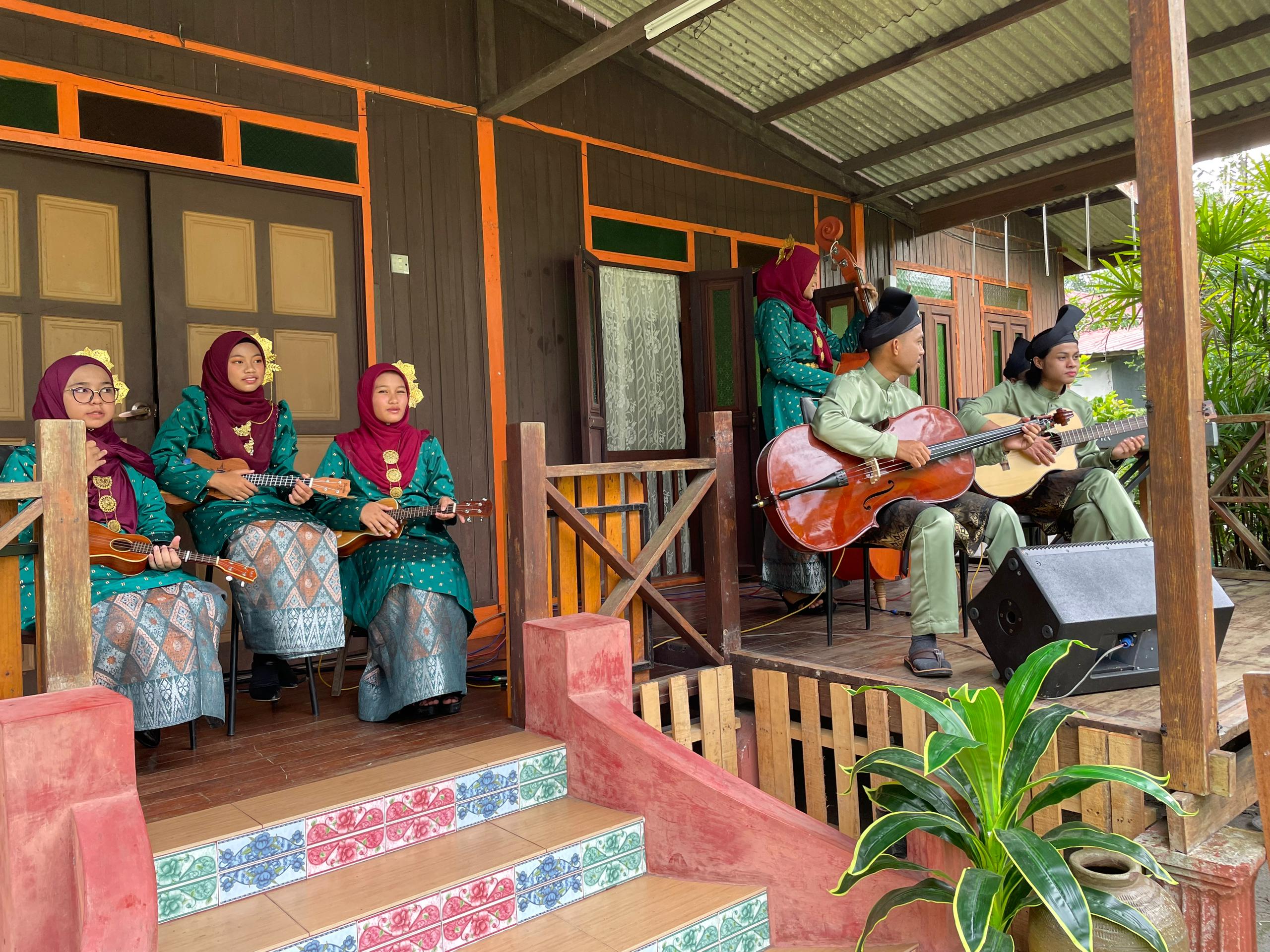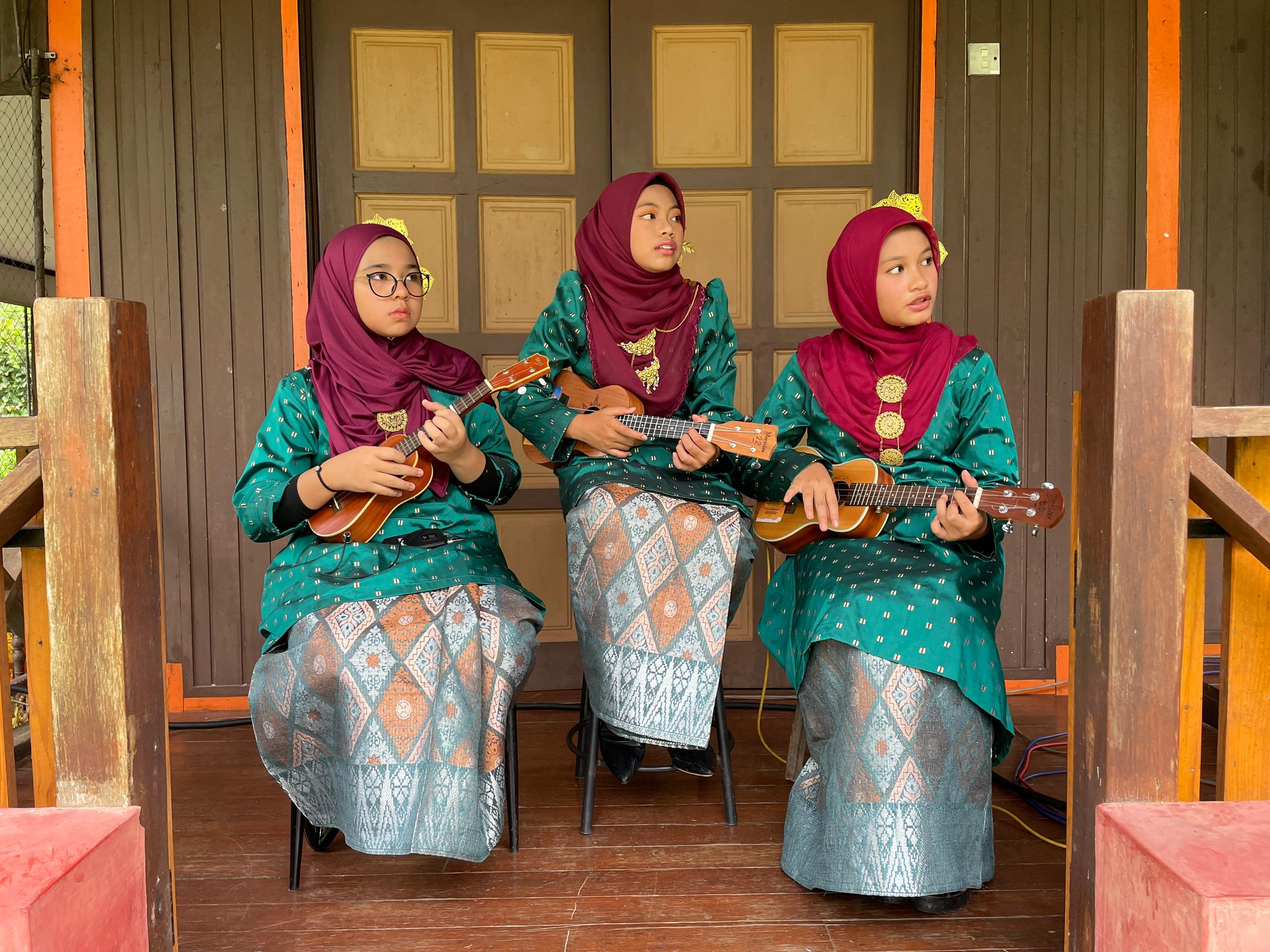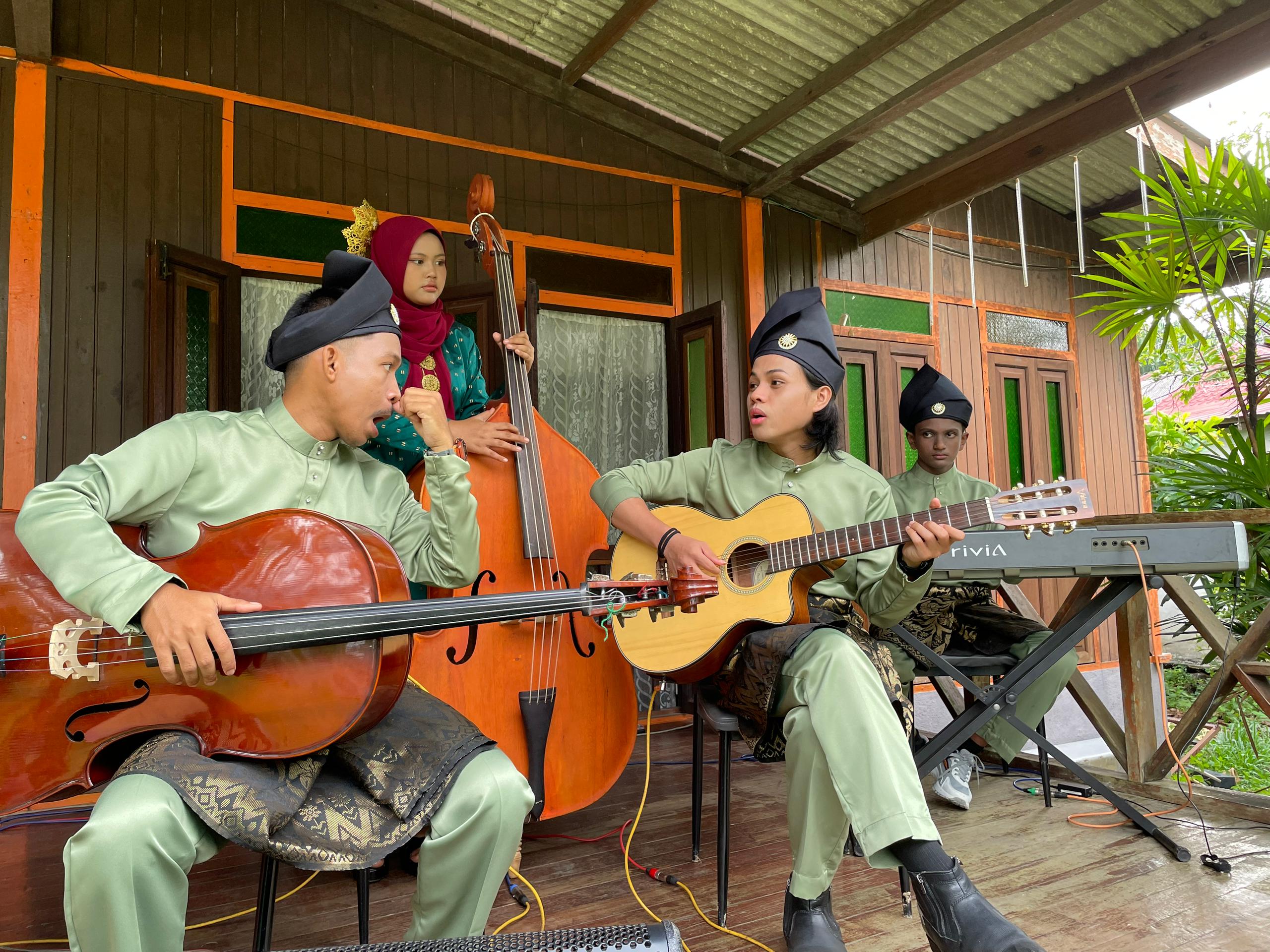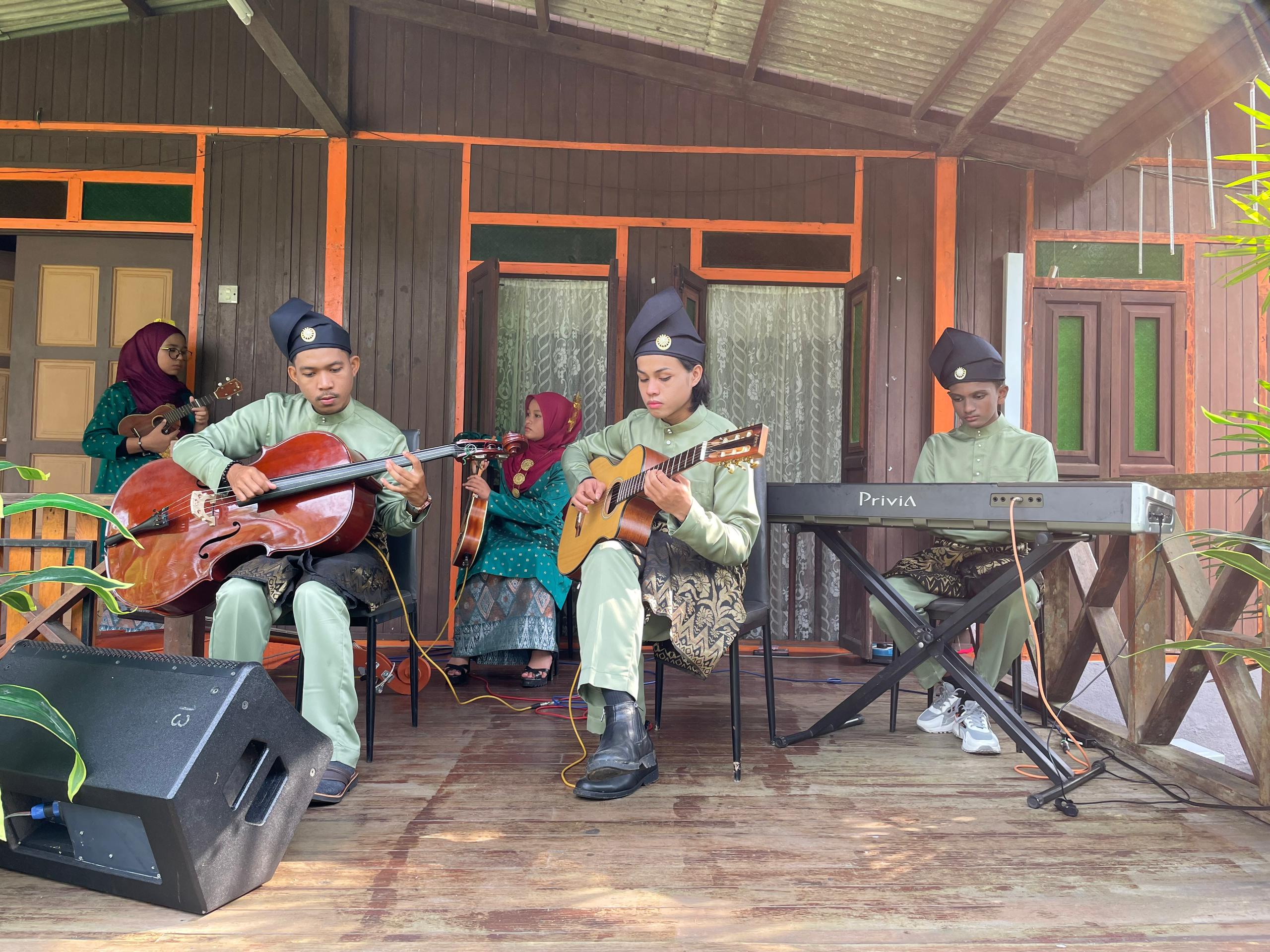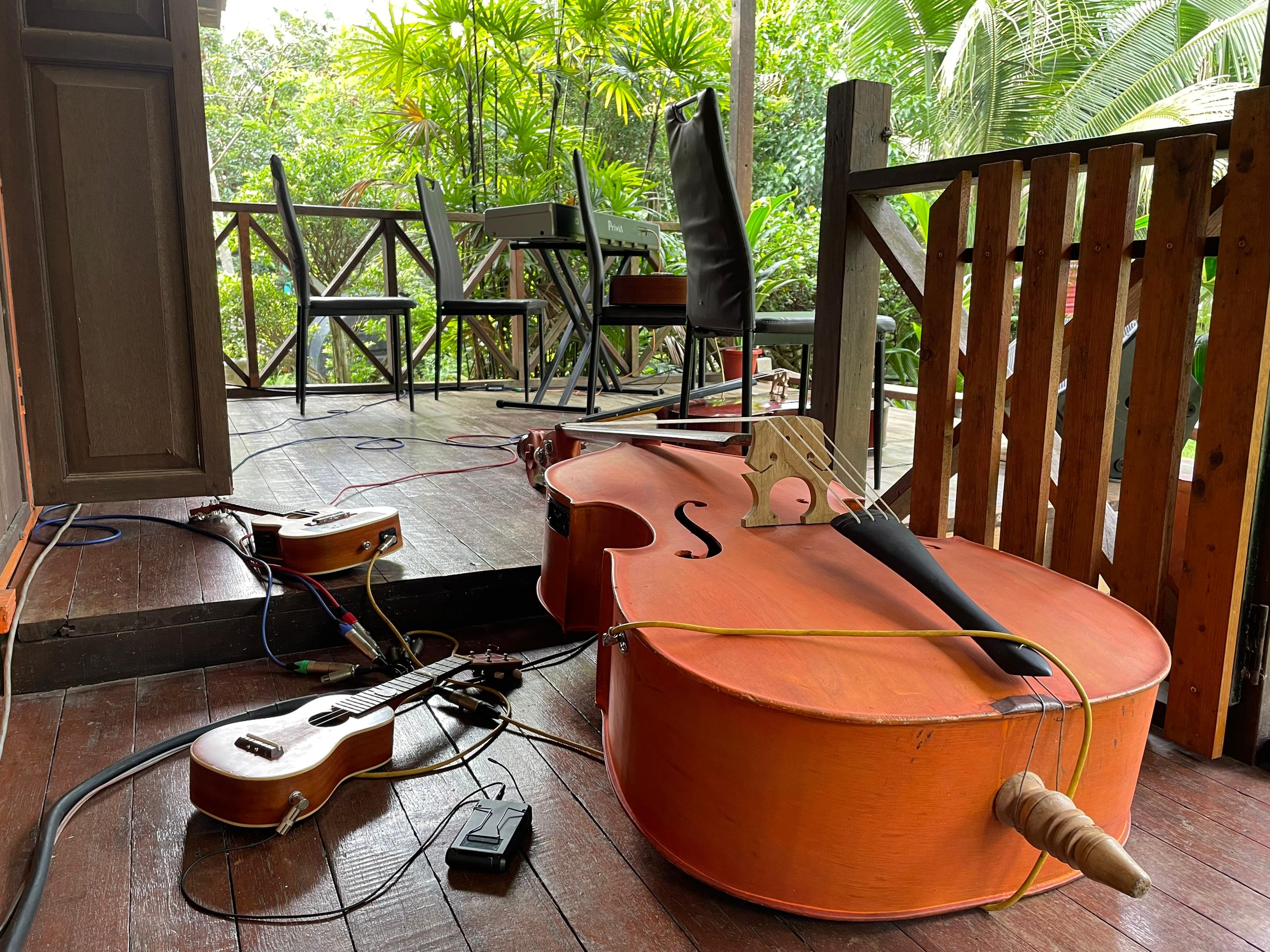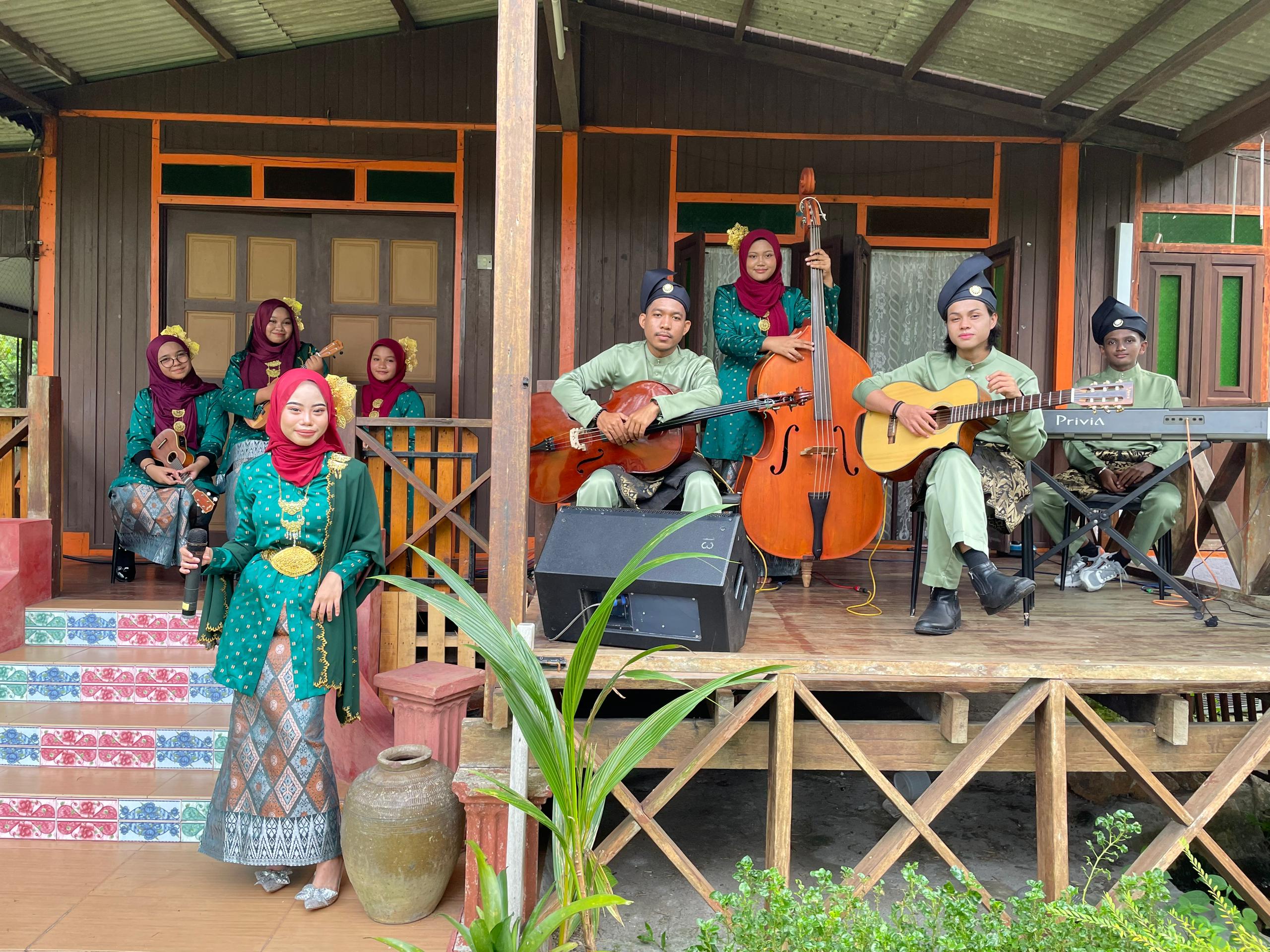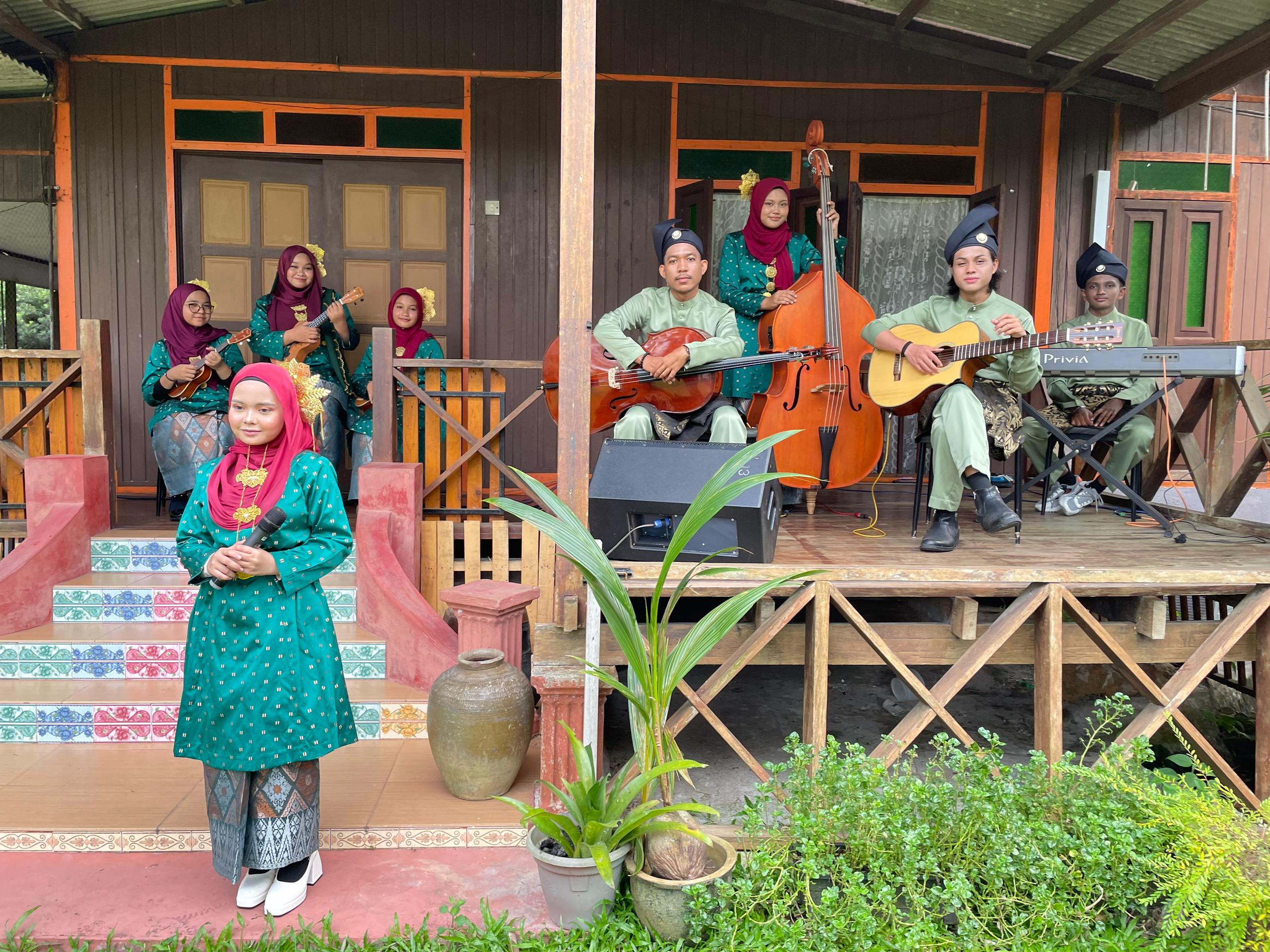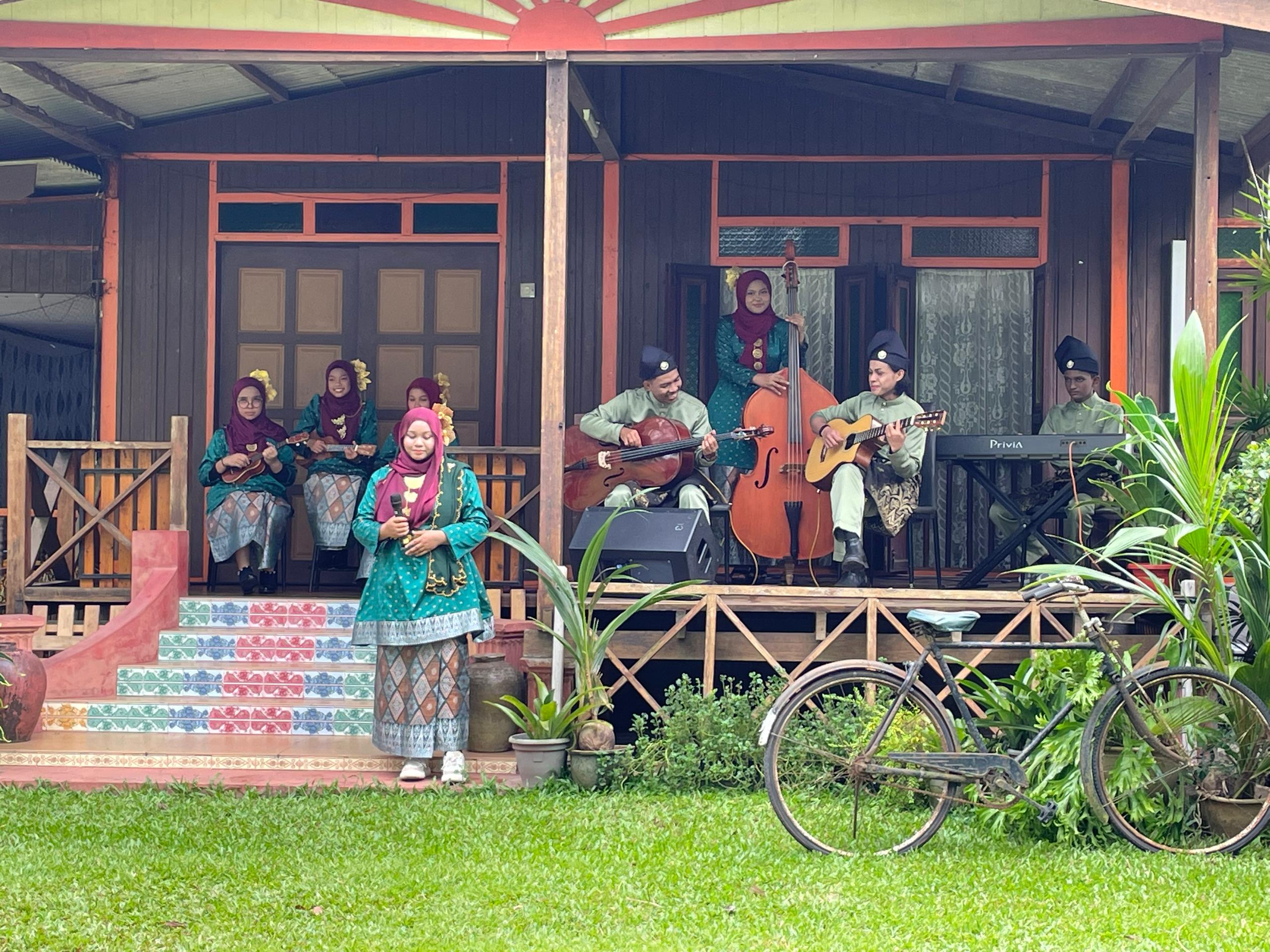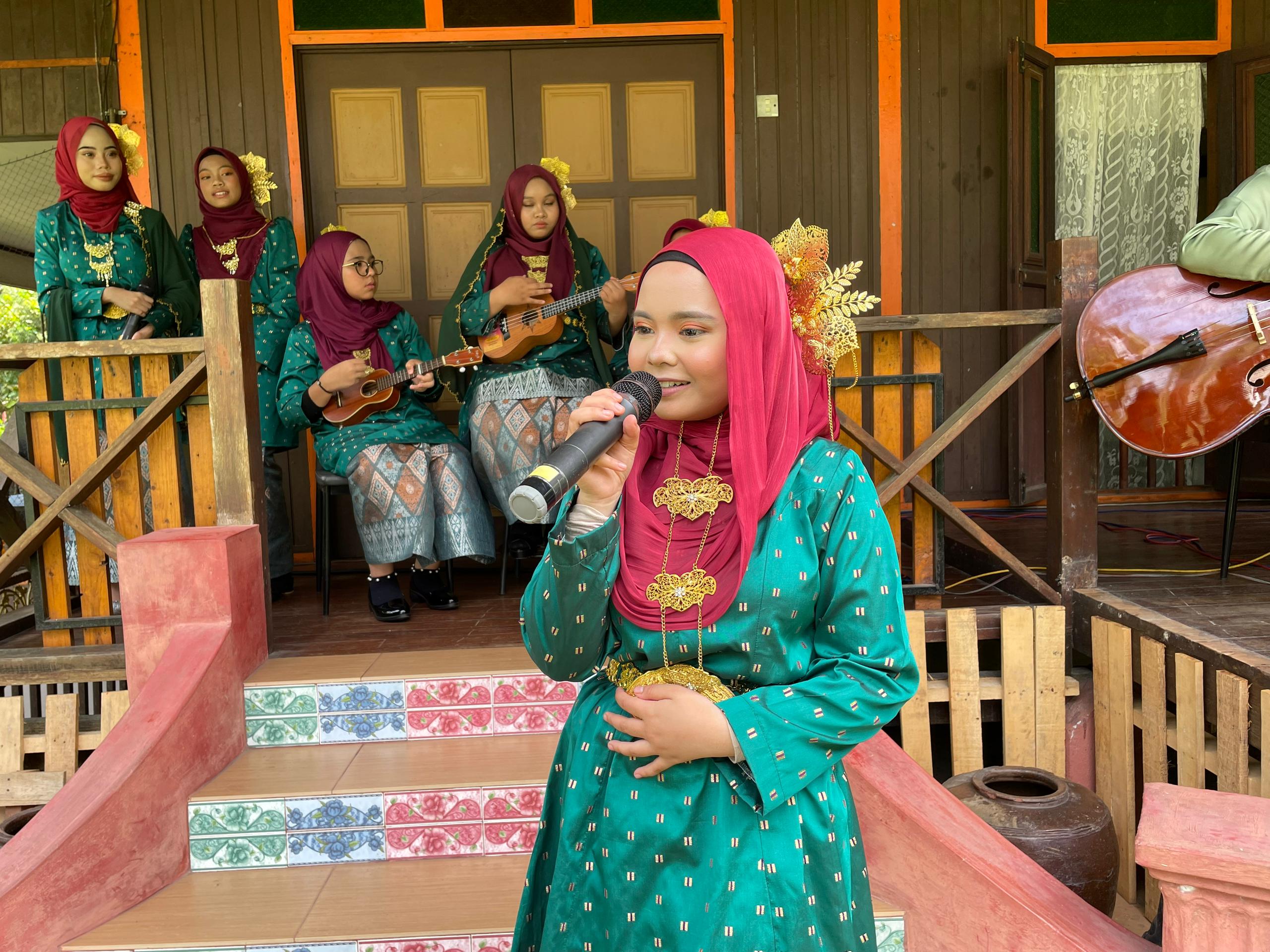ARTS AND CULTURE INFORMATION GATEWAY
Immerse yourself in the colorful world of art and culture! From traditional heritage to contemporary works, discover uniqueness that reflects the nation's identity and identity
KERONCONG DI SELANGOR
Picture
14
Video
Available
Today's Visitor
35
Number of Visitors
1009
Introduction and history
Keroncong is a form of traditional music believed to have originated in Indonesia, particularly in Java, and has since evolved into a significant component of the traditional musical landscape in Malaysia. It is widely recognized for its gentle and soothing melodies, typically performed using plucked and bowed instruments. According to the Kamus Dewan (Third Edition), Keroncong is defined as a Malay musical rhythm and song style characterized by softness and melodiousness.
The history of Keroncong music dates back to the 16th century, when Portuguese colonizers introduced instruments such as the cavaquinho and guitar to local communities in the Malay Archipelago. This foreign influence eventually contributed to the emergence of a new musical genre, which is Keroncong. By the late 19th and early 20th centuries, Keroncong began to spread to Malaysia through the migration of Javanese communities to the Malay Peninsula, particularly to Selangor and the western coastal regions. These migrants brought with them their cultural heritage, including Keroncong music, which was warmly received by local society. Over time, Keroncong in Selangor underwent a natural evolution, incorporating local elements while preserving the essence of its original form.
Traditionally, Keroncong music served as a form of folk entertainment that transcended social boundaries, particularly among the Javanese community in colonial Malaya. It was commonly performed during communal feasts (kenduri), gotong-royong gatherings, weddings, and religious celebrations, making it an integral part of daily life and social culture. Early Keroncong songs often carried advisory messages, religious values, and life philosophies, conveyed through poetic and melancholic lyrics. With its soft and calming rhythm, Keroncong offered a way to soothe the soul, unite communities, and impart moral teachings in a gentle, reflective manner. Moreover, Keroncong functioned as a cultural bridge for migrant communities—especially during the migration of the Javanese people to Malaya in the late 19th century. It served as a medium for preserving ethnic identity, language, and musical heritage from their homeland.
In modern times, the role of Keroncong has expanded well beyond domestic entertainment. It is now regularly performed at official government events, cultural festivals, hotel functions, large-scale concerts, and is even a subject of academic study in higher education institutions. This diversification reflects Keroncong’s evolution into a medium for cultural diplomacy and a tool for preserving traditional musical heritage. In the field of education and character building, Keroncong continues to be relevant, especially as many of its songs carry messages of ethics, noble values, and social awareness. It is now seen as a form of artistic expression that educates while entertaining, emphasizing lyrical depth and moral meaning.
Furthermore, Keroncong has become a platform for intergenerational connection, as younger musicians are encouraged to reinterpret classic songs in modern styles while maintaining their original essence. This innovation helps introduce Keroncong to a broader and more diverse audience. In the state of Selangor, there have been active efforts to position Keroncong as an official traditional music genre, with initiatives such as music competitions and state-sponsored performances. These actions reflect official recognition of Keroncong’s cultural value and its potential to be developed as a national heritage art form.
In traditional Keroncong performances, there is no fixed or standardized costume. However, as a traditional musical art form that reflects Malay cultural identity, particularly in Selangor, attire remains an important aspect, emphasizing Malay aesthetics adapted according to the performance theme, event type, and cultural context. Local Malaysian influences have shaped the musicians’ clothing to reflect traditional Malay styles—modest, elegant, and respectful of the region’s cultural values.
Male musicians and vocalists typically wear Baju Melayu Teluk Belanga, paired with either a songket samping or kain pelikat. This traditional outfit conveys a sense of modesty, orderliness, and formality, aligning with the gentle and soulful nature of Keroncong music. A black songkok is often worn as a symbol of cultural pride and respect, completing the traditional look. Color choices are usually coordinated with the theme of the performance—soft hues for formal ceremonies and brighter tones for cultural festivals.
Keroncong music is renowned for its gentle, flowing, and soothing sound, a signature quality produced through a unique combination of plucked and bowed string instruments. These instruments form a well-structured and harmonious ensemble, with each instrument playing a distinct yet complementary role in building the layers of rhythm and melody. Among the key instruments used in a typical Keroncong performance are:
Acoustic Guitar
The acoustic guitar plays a primary role in providing both rhythm and harmony. It strums basic chords and fills the sonic space between the other string instruments. The strumming technique used in Keroncong typically follows a relaxed and consistent traditional rhythm, evoking a serene and romantic atmosphere.
Cello
The cello is a bowed string instrument that delivers low-register melodic lines and supporting harmonies. Its deep, rich tone adds emotional depth and dramatic weight to the music, helping to balance the ensemble between low and high frequencies.
Double Bass
The double bass supplies the foundation of the ensemble, producing stable basslines that support the entire musical structure. Played primarily using
Keroncong music is typically performed by a small ensemble, usually consisting of eight to ten musicians, including vocalists. Each member plays a specific role, and the coordination among the performers is essential to ensure that the flow of Keroncong music remains harmonious and emotionally resonant. Most performances feature both a male and a female vocalist, either singing individually or in a duet. This vocal pairing creates contrast and balance, contributing to a romantic and soulful ambiance that reflects the essence of Keroncong songs.
-
Reference Source
Bahan Bacaan
Darini, R. (2012). Keroncong: Dulu dan Kini. Mozaik, 6(2), 19-31.
Rachman, A. (2013). Bentuk dan analisis musik keroncong tanah airku karya Kelly Puspito. Harmonia: Journal of Arts Research and Education, 13(1).
Juris, A., Hazmi, A. H., Rafedzi, E. R. K., & Jali, J. M. (2024). Irama muzik keroncong: Warisan seni muzik Melayu yang kian dilupakan. Jurnal Kajian Lisan Malaysia, 2(2).
Minhad, A. B., & dengan Kepujian, S. M. S. G. (2008). Cabaran Jabatan Kebudayaan, Kesenian Dan Warisan Negeri Selangor (JKKWNS) Dalam Menjadikan Muzik Keroncong Sebagai Identiti Negeri Selangor (Doctoral dissertation, Universiti Malaysia Sarawak).
Ganap, V. (2006). Pengaruh Portugis pada musik keroncong (Portuguese influence to kroncong music). Harmonia: Journal of Arts Research And Education, 7(2).
Location
State JKKN Contact Information
Ahmad Zaimy bin Mohd Yusoff
Cultural Officer
Jabatan Kebudayaan dan Kesenian Negara, Selangor
Tingkat 6, Menara Korporat,
Kompleks IDCC Shah Alam
Jalan Pahat L 15/L, Seksyen 15
40200 Shah Alam,
SELANGOR DARUL EHSAN
03-5543 1654 /1763
Use the form below to contact the Informant/Figure/Editor/Researcher directly. We will respond to your inquiry as soon as possible!

 Lot 1618 Jalan Damai Kg Sungai Lang 42700 Banting Selangor
Lot 1618 Jalan Damai Kg Sungai Lang 42700 Banting Selangor
